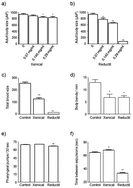Obesity is an ever increasing health concern of global importance. The treatment options for this condition are limited and until recently there was only one FDA approved anti-obesity drug available. The approval of two anti-obesity drugs which have both undergone post-marketing withdrawal undermines consumer confidence and highlights the need for more robust pre-clinical toxicity testing. The nematode Caenorhabditis elegans is an established toxicological model and while it is still in its infancy with regards to the study of obesity, the ease of maintenance and high-throughput assays makes C. elegans an appealing choice. Here, we explore the suitability of C. elegans as an in vivo toxicity model for the mechanistic screening of two anti-obesity drugs. Toxicity profiles identified that a Sibutramine containing drug induced pronounced effects on pharyngeal pumping, defecation, locomotion and reproduction, in concert indicative of a possible neuronal mode of action. Resultant from a drug resistance screen we demonstrate that Sibutramine has non-serotonergic targets, a notion that suggests that serotonin-specific reuptake inhibitors (SSRIs) are less specific than first assumed. These results stress that the interplay between serotonin, dopamine and norepinephrine is not easily dissected. Overall, the data highlight the value of C. elegans as an in vivo toxicity tool in anti-obesity drug research.

You have access to this article
 Please wait while we load your content...
Something went wrong. Try again?
Please wait while we load your content...
Something went wrong. Try again?


 Please wait while we load your content...
Please wait while we load your content...